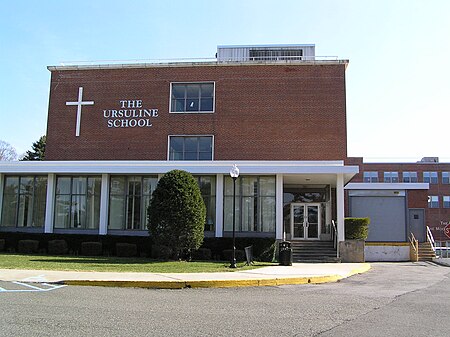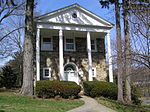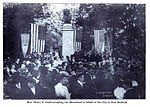The Ursuline School
1897 establishments in New York (state)AC with 0 elementsCatholic secondary schools in New York (state)Education in New Rochelle, New YorkEducational institutions established in 1897 ... and 4 more
Girls' schools in New York (state)Private high schools in Westchester County, New YorkPrivate middle schools in Westchester County, New YorkUrsuline schools

The Ursuline School is an all-girls, independent, private, Roman Catholic middle and high school located on a 13-acre (53,000 m2) campus in New Rochelle, New York in Westchester County. The school was founded in 1897 by the Order of St. Ursula. The school is part of a network of 15 Ursuline schools in North America and many around the world.Ursuline is home to approximately 800 students, grades 6–12, that come from throughout the Metropolitan Area, including the Bronx, Westchester County, Rockland County, Manhattan and Connecticut.Ursuline's brother school is Iona Prep, also located in New Rochelle.
Excerpt from the Wikipedia article The Ursuline School (License: CC BY-SA 3.0, Authors, Images).The Ursuline School
Hutchinson River Parkway,
Geographical coordinates (GPS) Address Website External links Nearby Places Show on map
Geographical coordinates (GPS)
| Latitude | Longitude |
|---|---|
| N 40.948194444444 ° | E -73.7975 ° |
Address
Ursuline School
Hutchinson River Parkway
10804
New York, United States
Open on Google Maps





